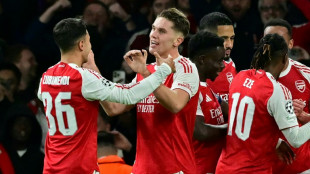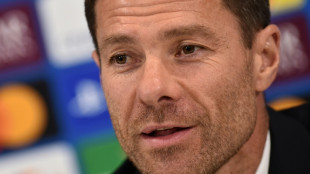
| CMSC | -0.34% | 23.67 | $ | |
| CMSD | -0.38% | 23.9 | $ | |
| JRI | -0.14% | 13.88 | $ | |
| BCC | -3.15% | 68.34 | $ | |
| SCS | -0.76% | 15.84 | $ | |
| RIO | -1.95% | 70.37 | $ | |
| BCE | -0.84% | 22.67 | $ | |
| GSK | -1.1% | 46.35 | $ | |
| NGG | -0.68% | 74.74 | $ | |
| RBGPF | -3.95% | 76 | $ | |
| RYCEF | 1.37% | 15.36 | $ | |
| VOD | -5.89% | 11.38 | $ | |
| RELX | -0.16% | 44.17 | $ | |
| AZN | -0.83% | 81.72 | $ | |
| BTI | 2.38% | 52.44 | $ | |
| BP | -0.75% | 34.87 | $ |

India women cricketers hail new era but challenges remain
India's historic Women's World Cup victory has sparked an excitement which it is hoped will inspire the next generation and draw new fans to the sport.
Prime Minister Narendra Modi, expected to meet the winners on Wednesday, believes the "historic win will motivate future champions to take up sports".
Hosts India defeated South Africa by 52 runs on Sunday, claiming their first-ever Women's World Cup.
At the top level, gender parity has long been championed by former Board of Control for Cricket in India (BCCI) secretary Jay Shah, who introduced equal match fees for men and women.
The 50-over World Cup also boasted a record $13.88 million prize purse, eclipsing the men's total from two years ago.
Shah, now International Cricket Council (ICC) chairman, hailed the win, citing the BCCI's "increased investment, pay parity with male cricketers (and), overhaul of the coaching staff".
Former India skipper Mithali Raj described it as the culmination of years of effort.
"For every person standing behind a young girl who dares to dream of wearing India's colours, this is a pivotal moment, a reminder that dreams do come true," she wrote, posting a photograph of herself embracing the trophy.
- 'Women's fast-growing influence' -
Despite the triumph, women's sports in India still have far to go and the impact of the World Cup win may be gradual.
"The gender gap is stark, especially during adolescence and early adulthood," according to a 2024 State of Sports and Physical Activity report, backed by global consultancy firm Dalberg.
"The largest gender gaps unsurprisingly occur when caregiving responsibilities increase," it adds, citing household chores and care of children or the elderly.
The UN children's agency, in partnership with the ICC, sought to use the World Cup to "create equal opportunities for every girl and boy", Unicef representative to India Cynthia McCaffrey said.
"As a cricketer, I know how the sport is a great equaliser," India's vice-captain Smriti Mandhana said, who joined the Unicef campaign.
Women now make up more than a third of India's estimated 655 million sports fans.
A 2024 Deloitte and Google study found women -- 236 million fans, or 36 percent -- are shaping the sports market, debunking the notion of a male-only fanbase.
India's Women's Premier League (WPL), staged first in 2023, delivered the BCCI roughly $700 million in franchise and media rights alone.
- 'Girls are not fragile' -
Young women cricketers say the World Cup success will strengthen their sport.
At a net session in a New Delhi cricket academy, a bouncer slammed into Armeet Kaur's helmet, prompting a flurry of concerned apologies.
The 20-year-old brushed them off and told the bowler to carry on. The next ball, she stepped out of her crease and lofted it clean.
"Girls are not fragile," she said. "And the good thing is that people know that now -- after seeing women's cricket on TV. That matters because what people think does have a bearing on the world."
Kaur credited systemic changes in women's cricket for India's success.
"Now the money is almost at par with men's cricket, and there are more tournaments for women at all levels," she said.
"The good thing is that people no longer discourage girls from playing."
The World Cup drew record viewers: the first 13 matches attracted more than 60 million viewers, five times the 2022 edition.
While modest for the world's most populous nation, it signals growing interest in women's cricket.
That means Indian girls can see cricket as a viable career.
"I started playing because it was my passion," said Ishita Singh. "But now I want it to be my full-time profession."
Singh, 20, said she could confidently claim to be speaking on behalf of many of her peers.
"There were only two of us in the academy when I started playing some eight years ago," she said. "Now there are so many."
But Singh said she wished there were even more.
"Not enough girls play in India still," she said.
"And I want that to change."
X.Polak--SbgTB



